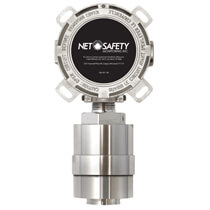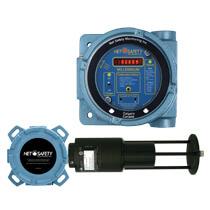
Douglas Morris
Director of Marketing, Mining & Power Industries
Everyone knows that gas generation is becoming more and more common for baseload power. It’s a proven, reliable, and less carbon intensive fossil technology for generating electricity. Plants that use it are also subject to some additional safety requirements, for example, Health and Safety Executive (HSE) guidance note PM84 from Great Britain discusses ”Control of safety risks at gas turbines used for power generation”. Detecting gas leaks is a major focus of this note.
The pipework supplying the fuel to the turbine combustion chambers is highly complex, with a combination of flanges, flexible pipes, valves, and bellows, subject to high pressures (often 30 – 50 bar) and high temperatures. Over time components may degrade due to creep, fatigue, erosion, and oxidation, leading to mechanical failure.
Such failure in the turbine, or an explosion within the acoustic enclosure, could disrupt the fuel pipework, with the potential for uncontrolled release of fuel, leading to a fire or explosion. Additionally, ejected compressor blades and other high-speed components may cause major injury to workers or critical systems far from the turbine.
To provide early warning of gas releases and fires or detonations, PM84 advises on the use of a fixed fire protection system. This could include a combination of thermal, flame, and smoke detectors as well as gas detectors. It is not unusual, for example, to place gas detectors in the ventilation outlet from the enclosure since a leak will always reach it. Other detectors can also be installed within the enclosure.
Emerson’s point infrared combustible gas detector and air particle monitor (APM) are potential solutions to help meet these safety requirements. For example, the APM can provide early warning against high pressure leaks of lubricating and hydraulic oils, while the combustible gas detector can monitor for gas leaks.As generators install more gas-fired capacity, companies are looking to make sure they keep these plants safe. Not only are fixed protection systems a best practice, but they also free up workers to focus on other things since these systems provide 24/7 online monitoring. With combined-cycle plant workforces getting smaller and smaller, a system that can improve both safety and productivity seems to make a lot of sense.
From Jim: You can connect and interact with other power industry professionals in the Power group in the Emerson Exchange 365 community.






